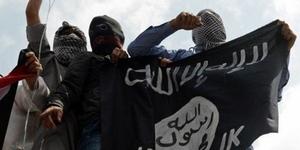TerrorismU.S. intelligence, leaders unclear on exact danger posed by ISIS
Considerable discrepancies in the reporting from U.S. intelligence services regarding the strength of the Islamic State (IS) have led critics to the conclusion that the U.S. intelligence community knows little about the terrorists’ actual strength as the United States is in the process of developing a military strategy to defeat the Islamist organization.

Questions grow of ISIS ability to attack the U.S. // Source: haqona.net
Considerable discrepancies in the reporting from U.S. intelligence services regarding the strength ofthe Islamic State (IS) have led critics to the conclusion that the U.S. intelligence community knows little about the terrorists’ actual strength as the United States is in the process of developing a military strategy to defeat the Islamist organization.
As theWashington Post reports,testifying before a congressional panel,top intelligence officials told lawmakers that the militant group had an estimated 10,000 fighters. Just one day later, however, a new assessment, prepared by the Central Intelligence Agency (CIA), offered figuresbetween 20,000 to 31,500 militants scattered across Syria and Iraq.
Regardless of the exact number of fighters ISIS has, President Obama took a cautious view, saying in a speech that the United States has “not yet detected specific plotting against our homeland,” added, though, that ISIS leaders “have threatened America and our allies, and are on a path to deliver on those threats if left unchecked.”
Lisa Monaco, the assistant to the president for homeland security and counterterrorism, added that “At least at this stage, it’s a really different type of threat that it poses.”
Some terrorism experts have argued thatObama’s decision to launch a multi-year military campaign against ISIS was driven more bypublic psychology engenderedby the brutal beheadings of three Westerners than by direct threatto the United States.
Monaco herself admitted thattargeting ISIS could create or intensify the organization’s motivation tostrike the U.S. mainland.
Other agree. “There will be a revenge factor,” said Paul Pillar, a former deputy director at the CIA’s Counterterrorism Center. “The killing of the two captive journalists was depicted by the group explicitly as retaliation for strikes that had already occurred.”
Terrorism experts also say that the expansive manner in which American politicians described the threat from ISIS also helped inflate the nature of the threat to the United States the group poses. Secretary of State John Kerry has stated that “There is no contain policy for ISIL…and leaving them in some capacity intact anywhere would leave a cancer in place that will ultimately come back to haunt us.”
Senator Dianne Feinstein (D-California)added that ISIS is “the most vicious, well-funded and militant terrorist organization we have ever seen.”
